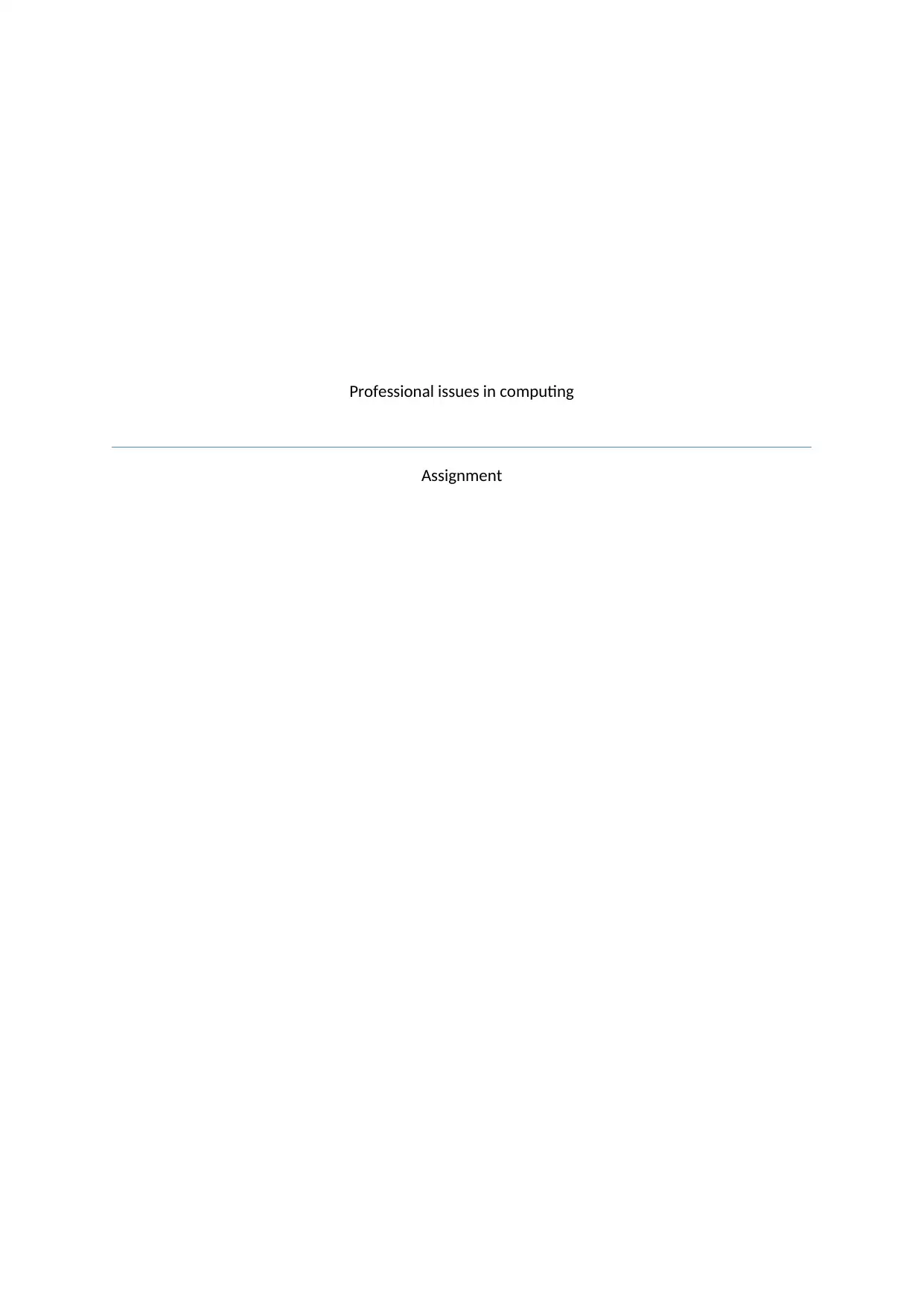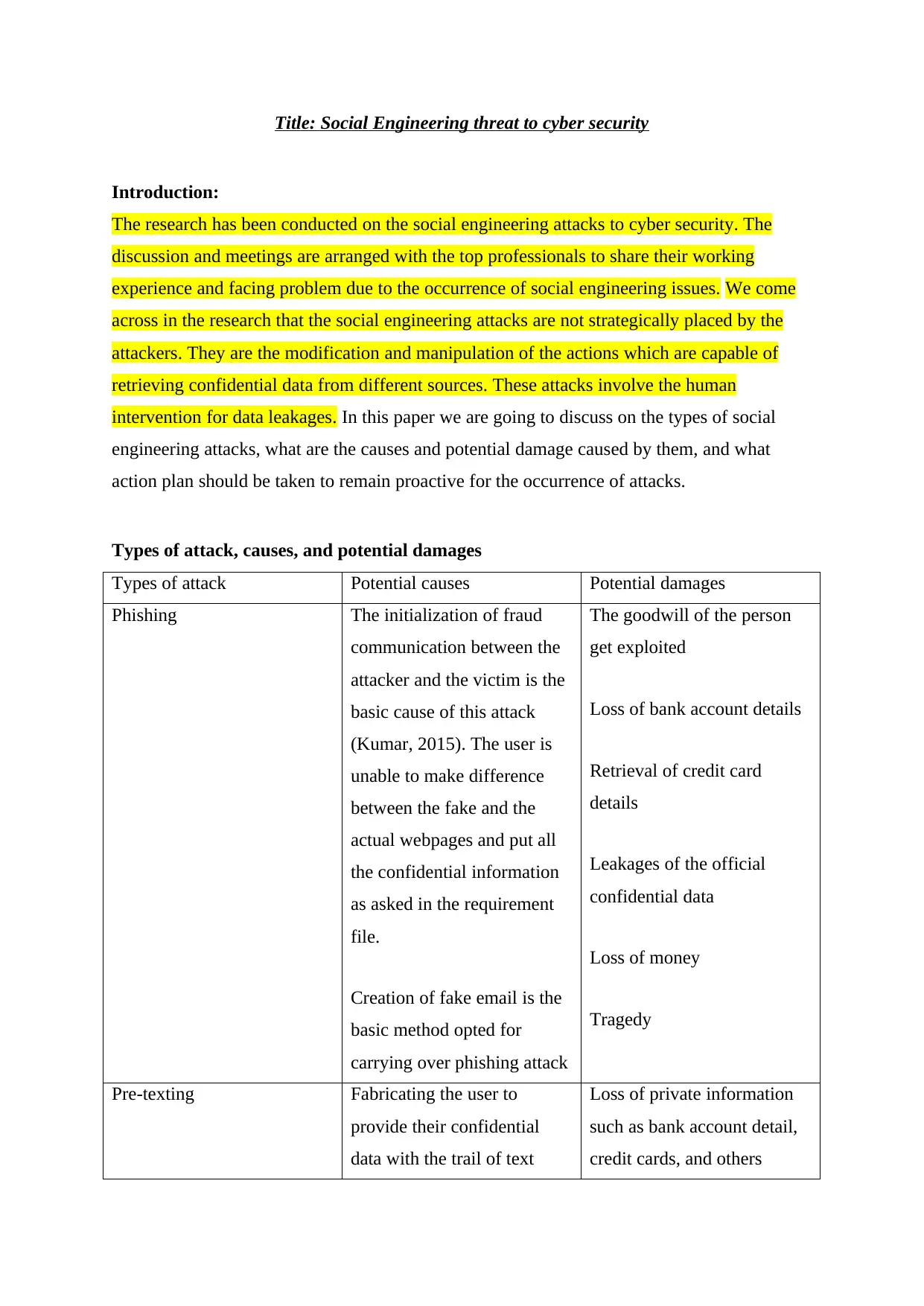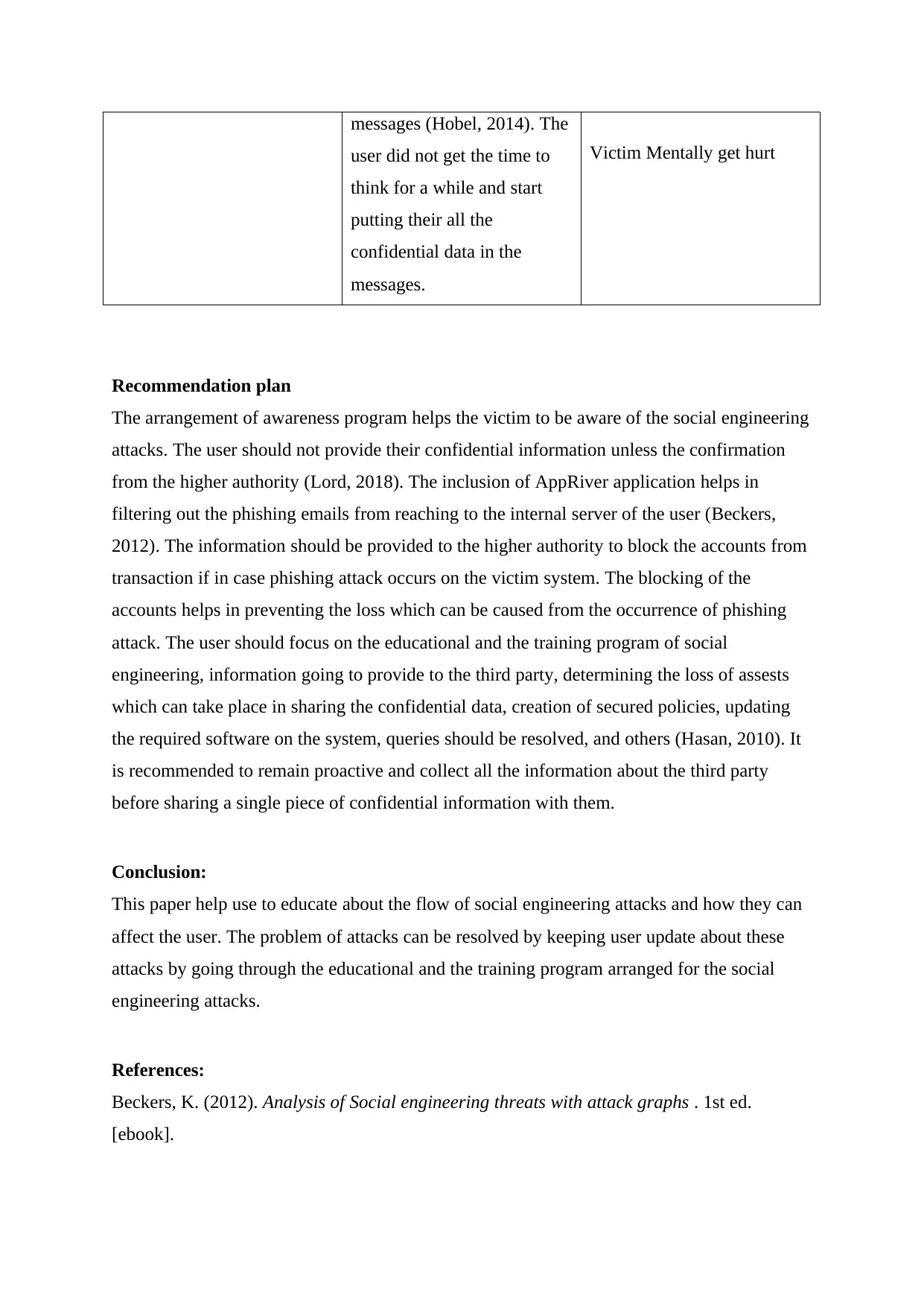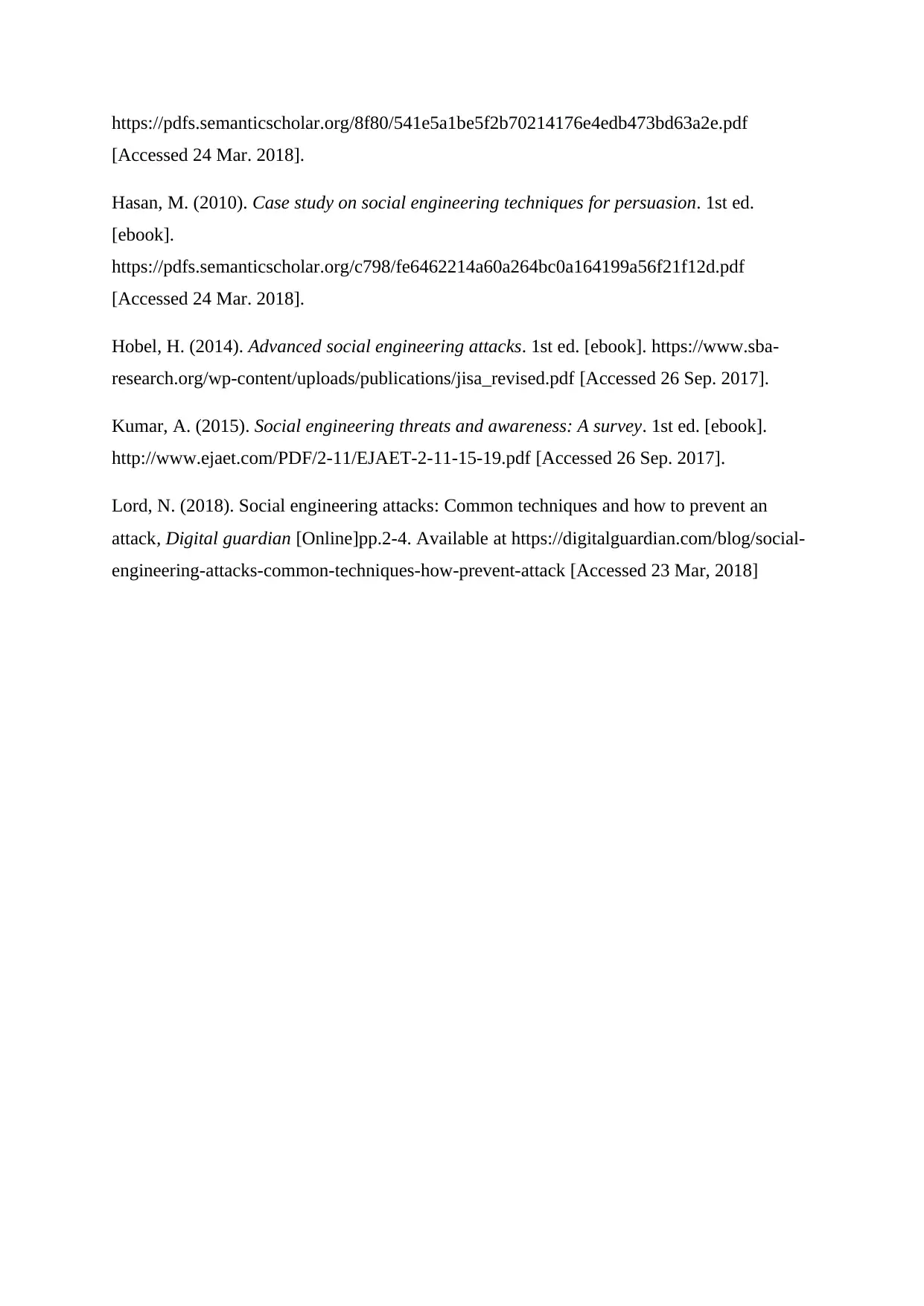Social Engineering Threats in Cybersecurity: A Detailed Report
VerifiedAdded on 2021/04/24
|5
|774
|82
Report
AI Summary
This report provides an in-depth analysis of social engineering attacks within the realm of cybersecurity. It begins with an introduction to the concept, highlighting the modification and manipulation of human actions to retrieve confidential data. The report delves into two primary types of social engineering attacks: phishing and pre-texting, detailing their causes and the potential damages they can inflict, such as financial loss, data breaches, and reputational harm. The causes are identified as fraudulent communications and manipulation via text messages. The paper then outlines a comprehensive recommendation plan, which includes awareness programs, the importance of verifying information, and the implementation of tools like AppRiver to filter phishing emails. Furthermore, it emphasizes the need for educational and training programs, secure policies, and regular software updates. The report concludes by summarizing the impact of social engineering attacks and the importance of proactive measures to mitigate risks, referencing various sources to support its findings.
1 out of 5











![[object Object]](/_next/static/media/star-bottom.7253800d.svg)